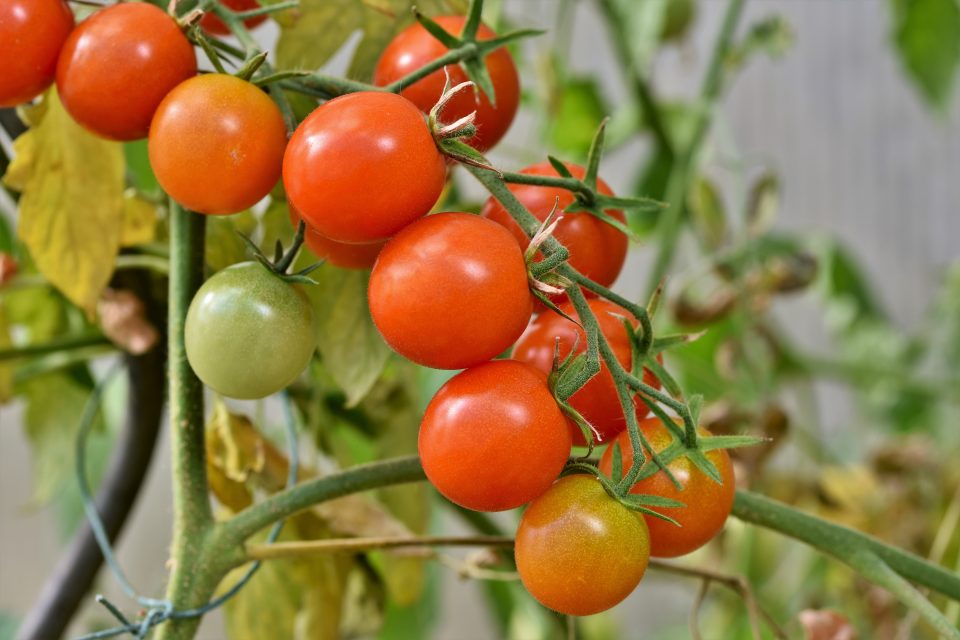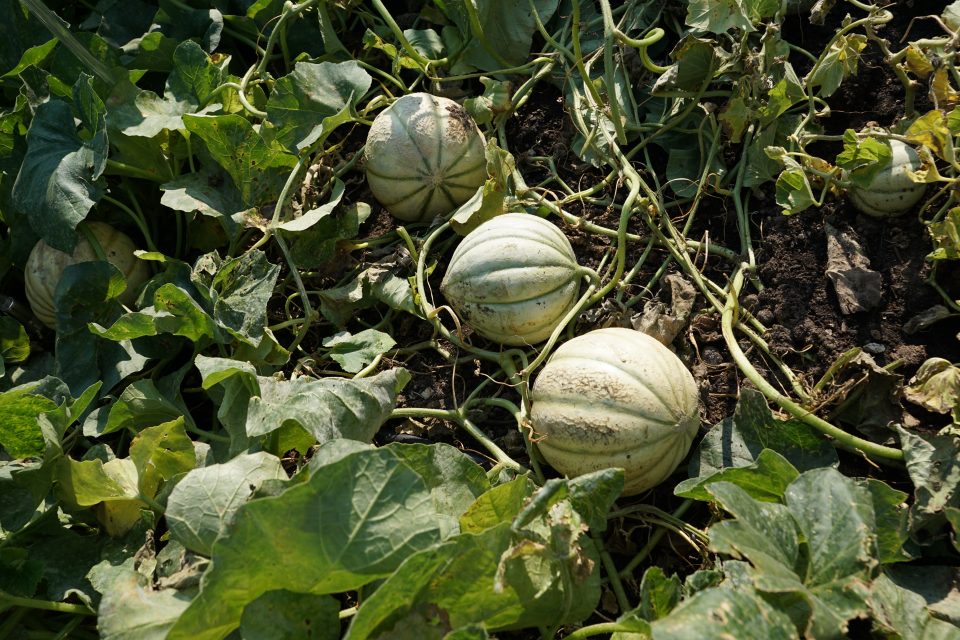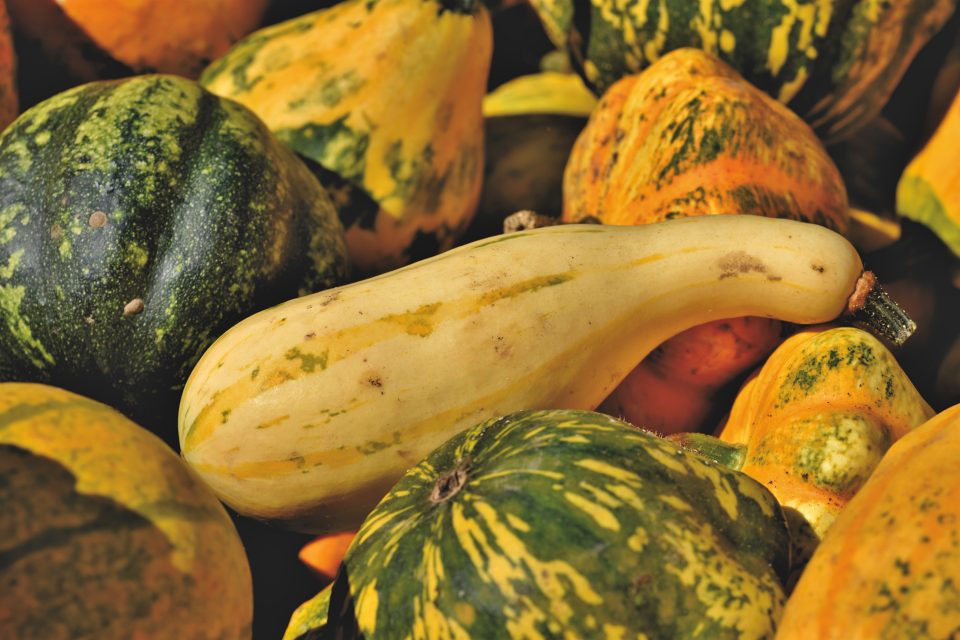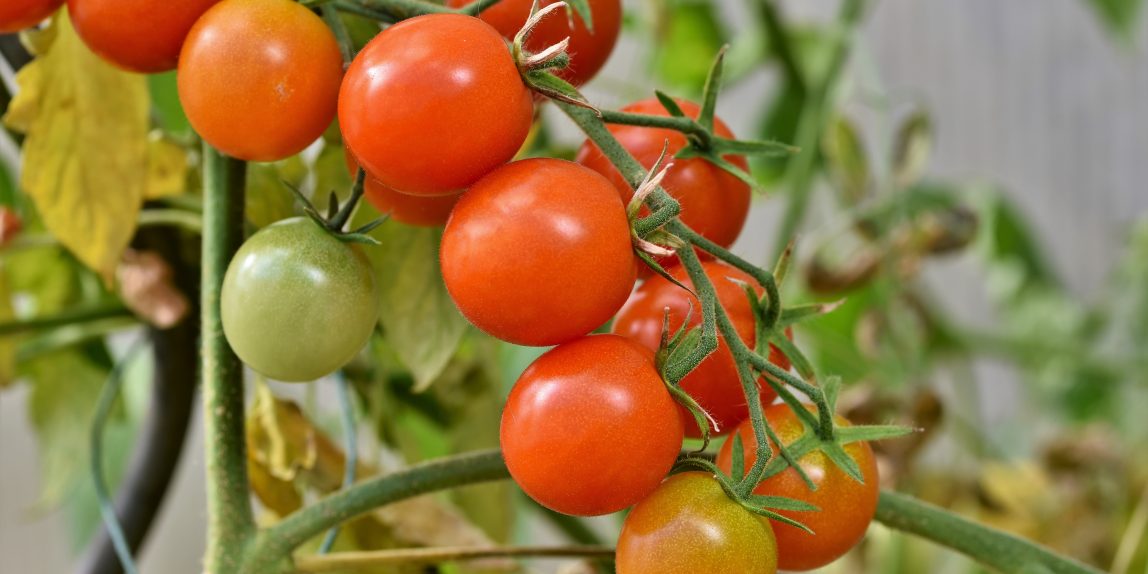Whether you are a brand-new gardener, or a seasoned expert, we all seek out tips and tricks to try to overcome the worst effects of the desert summer heat on our warm-season vegetable gardens.

Soil: Starting with properly amended soil is the most important factor in ensuring a good crop. Desert soil has some beneficial properties, but most traditional vegetables grown in gardens require additions of well-composted organic matter in order to drain properly and give roots room and nutrients to grow. A simple soil-texture test is to moisten the soil you’re planting in and squeeze some in your hand. If it is sticky or slick, it needs more compost mixed in. If it crumbles and falls apart, it needs more native soil. If it just holds nicely together, you’re on the right track. “Nevada Soils: Worth The Toil” (Hefner, M., Skelly, J., and Donaldson, S. 2009l, Extension | University of Nevada, Reno, FS-09-14) is a go-to guide to understand how soils work here in Nevada and how to maximize the soil you have.

Warm-Season List: It’s important to know which vegetables will grow outdoors in warm weather. Beans, cantaloupe, sweet corn, cucumbers, eggplant, okra, peanuts, peppers, pumpkin, squash (both summer & winter) sweet potatoes, tomatoes (which do not ‘set fruit’ over 95F degrees) and watermelon comprise the commonly-grown Warm-Season list here. Generally, these need 70F daytime and 50F nighttime temperatures to be planted out and by June’s 100F days, sweet corn, bush beans, and summer squash are about the only seeds willing to sprout. There is a Warm Season Vegetables Planting Guide available from University of Nevada, Reno-Southern Area Extension and also in Star Note #205.
Varieties of Vegetable Plants: Did you know that there are determinate and indeterminate tomatoes? “Growing Tomatoes in Southern Nevada” (Roberts, A. 1999, Extension, University of Nevada Reno, SP-99-11) and “Common Tomato Disorders Under Desert Conditions” (Mills, L., and Johnson, W. 1988, Extension, University of Nevada Reno, FS-88-60) are two excellent reference guides to growing tomatoes from the experts. Did you also know that there are certain varieties of beans, corn and squash that have been proven to grow well in the desert, and can be grown together? “Planning for the Growing Season” (Hanson Mazet, W., 2012, Extension, University of Nevada Reno) tells the story of The Three Sisters, a centuries-old proven companion planting method. The varieties you choose will make a big difference in your garden’s success. A research-based list of proven varieties has been compiled over many years of seed-trials by Master Gardeners in Clark County, NV and is available to the public. Contact the Master Gardener Helpline to obtain a copy.
Shade: Where you locate your garden will also have a deciding impact on your vegetable garden’s success. The east or northeast side of your house is a better location than the south or west, in the summertime. How many hours in the sun does it receive? Is it morning, noon, afternoon or late day sun?
All plants need some sun, (morning sun is best in summer) and most will need dappled shade through the worst heat of the day. Through research trials at extension gardens, it was found that 30% shade cloth is beneficial to protect vegetables from damaging mid- and late-day sun. Large containers on casters on a patio allow you to move your garden as needed, to provide sun or shade to optimize your plants’ yield.

Water: Plants that dry out repeatedly will not survive the summer. Plan for timed regular irrigation BEFORE you plant. Star has all the timers, valves, tubing, bubblers, drippers, connectors and tools to create the irrigation system your garden will need to thrive. Star Notes #905, #910, and #915 give good advice on irrigation systems. How often and how much will increase with the heat, but beware of overwatering, too. (We’ve all experienced the split-skin of tomatoes that got too much water after they started to ripen.) Be sure to check your locale’s Water Authority regulation guide to ensure you’re following best water-use practices within the laws.
Fertilizer: If your soil was well-prepared before planting, you may not need to add much fertilizer. If your plants appear to be struggling in spite of getting adequate water, they might need nutrients. Star Nursery carries a full line of organic and all-purpose plant food. Understand that N-Nitrogen helps leafy plants grow. P-Phosphorus and K-Potassium help fruits and roots grow. More, is not always better. You can burn plants with too much fertilizer applied at the wrong time. Star Notes #600 explains fertilizer basics.
Mulch/Compost: Spreading 3 to 4 inches of compost/mulch around your plants on top of the soil can help keep the soil cooler and reduce evaporation, thereby conserving water, as you’ll have to irrigate less. Keep the mulch back several inches from the stem of the plant to prevent crown/stem rot. “Mulching for Healthier Plants” Star Notes #620 outlines the process. Beware using dark-brown bark mulch that may have been dyed with walnut shells around plants, though. I learned the hard way that walnut has an allelopathic effect: it kills anything near it, to protect and maximize the tree’s resources. We don’t have Walnut trees here in the desert, but using dark Walnut-brown mulch is better for pathways where you don’t want anything to grow, as it will kill your plants. (Also, the dark color holds heat!) Good rich organic compost makes a much better mulch and will continuously feed your plants while keeping the roots cooler.
Pests and Diseases: The bane of a garden’s existence everywhere are pests and diseases. Keeping plants healthy in the first place will help them resist attacks by pests and inhibit development of diseases. Star Nursery carries ladybugs to combat Aphids. Using careful observation to Manage Insect Pests in the Landscape (Hefner, M. 2019, Tips for Managing Insect Pests in the Landscape, Extension | University of Nevada, Reno. IP.) you will keep your yields higher and possibly enjoy a bumper crop in the fall. Please be careful about using methods that will harm beneficial pollinators such as Leaf cutter bees and precious honeybees. Don’t delay in diagnosing “What’s wrong with my plant?”, though. Some issues can spread and decimate a garden, while others are just signs of heat stress and will happen no matter what we do. One tip from Master Gardeners in Las Vegas to avoid the worst of the squash bugs, is to wait to plant Squash, Melons and Cucumbers (cucurbits) until after June 15th. By that time, it’s too hot for squash bugs (hopefully) but vines still have time to grow and produce through summer.
For help with garden issues, ask your local friendly Star Nursery associate, and remember, Dr. Q makes house calls.
You may also call the Extension office in your area:
Southern Nye County-Pahrump, NV: 775-727-5532 press 2
Clark County, NV Master Gardener Helpline: 702-257-5556
Mesquite and Logandale, NV: 702-397-2604
Laughlin, NV: 702-299-1333 (also serving Bullhead City & Ft. Mohave, AZ)
St. George, UT: (Hurricane) 435-634-5706
Kingman, AZ: 928-753-3788
Peach Springs, AZ: 928-916-4245
By Heather Freeman
Master Gardener Coordinator
University of Nevada, Reno-Extension
Southern Nye County-Pahrump, 1651 E. Calvada Blvd. Pahrump, NV 89048

